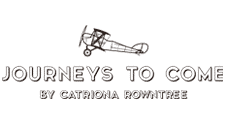The first time we pass a waterfall on our tour of Iceland we’re driving through the Snaefellsnes Peninsula, the water is cascading in plumes in five to 10-minute intervals down the side of the mountain which borders the road we’re following.
Charles looks over at me pleadingly. Even before he speaks, I know what he is thinking, can sense his longing to stop as his finger hovers over the shutter button on his camera, which he continually puts to his eye.
“Do you think we’ll get to stop?” he asks me from across the aisle in the minivan.
“I mean, look at this.” He peers out the window gesturing towards the endless flow of waterfalls.

“Trust Larus,” I say. Larus is our guide for the next 10 days, the softly spoken, burly type who you can easily imagine has descended from the Vikings who used to traverse these lands.
“There are plenty of waterfalls on the tour, and he must think these aren’t worth stopping at.”
The Snaefellsnes Peninsula is north of Iceland’s capital Reykjavik, where we’ve spent the past two days getting ourselves acquainted with the unusual landscape and beauty of this northern country.

We’ve relaxed in the hot springs at Blue Lagoon – a thermal pool of steaming milky blue waters that provide welcome respite from the cold Icelandic air that surrounds us.
We’ve walked through the city centre, stopped in to admire the soaring and simple lines of the Lutheran Church, the Hallgrimskirkja, the largest church in Iceland, and taken in the sweeping scenery from the Reykjavik coastline.

Leaving Reykjavik behind we stopped at Thingvellir National Park, much more than just an interesting geological rock formation, Thingvellir was the setting for Iceland’s first Parliament from 930AD, an open-air setting in which all major decisions were debated and disputes settled.
We’re here in Spring, where the long days and summer sun mean we’ll miss the northern lights (you need darkness and clear skies to see them) but will get endless daylight to better explore the landscapes.
And when I say endless, I mean endless, during the tour I look out my window at 11 pm, midnight, 3am, 4am and not once do I see a pitch-black sky. Instead the landscape is shrouded in the kind of soft light we generally associate with dusk.

But back to the Snaefellsnes Peninsula. Snaefellsnes roughly translates to Snow mountain’s peninsula, and that mountain we’re driving alongside, is actually a volcano and just to keep things interesting, and because this is, after all the land of fire and ice, the volcano is topped with a glacier.
And so, it’s really not surprising that every few metres or so there’s another waterfall.
Beyond the waterfalls the Snaefellsnes Peninsula has the kind of haunting landscape you imagine in The Shipping News by Annie Proulx or Burial Rites by Hannah Kent, indeed, Burial Rites was set in this part of the world.
We’ve already stopped at Hraunfossar (Lava waterfalls) and Barnafoss (children’s waterfalls).

Two stunning, yet very different sets of waterfalls just a short walk apart. Where Hraunfossar is a gentle series of waterfalls streaming out of the sides of the lava field Hallmundarhaun, Barnafoss is a violent single stream that has seemingly crashed through the rock with its sheer mite.
But the thing about Iceland is that there is a stunning, and disparate, vista at every turn, from that haunting landscape, to the many and varied waterfalls, the dynamic landscapes that make up the lava fields and, of course, the volcanoes.
And yet for a country with 132 volcanic mountains, Iceland is not as mountainous as you might expect. The volcanoes are not the soaring high peaks that you see in Nepal or even Switzerland, and this reduced stature makes them feel less imposing and somehow closer, less dramatic and more peaceful.
On the Snaefellsnes Peninsula we stop at Arnastapi to take in the rocky costal cliffs and blowholes and the pretty little town of Stykkisholmur.
We drive the ring road around Iceland, stopping at quaint towns, stunning waterfalls, mountain peaks and lava fields.
We stop to go whale watching and are amply rewarded with at least three whales who play close to the surface, showing us their tails and fins, but never quite breaching. We go in search of puffins and other birdlife, we’re too early for a good look at the puffins, though we do see them resting on the water in the distance, but do manage to spot an arctic fox crossing the road in front of us.

At Skaftafell a couple of us take an after dinner walk and stumble upon the Vatnajokull Glacier, the largest icecap in Iceland. The scene before us of a creeping glacier nestled into the scree-covered mountains feels other-worldly, or perhaps like we’re standing at the edge of the world.
And this too, is how it feels to be in Iceland. Seemingly within minutes we move from rolling mountains to boiling mudflats where the ground literally boils in front of us and beyond that at Stokkur geyser we watch in anticipation as the earth erupts into a natural water fountain. At Jokulsarlon we take a boat ride out onto Glacier Lagoon and sail among the glaciers before stopping at Diamond Bay where the glaciers along the water’s edge look like diamonds scattered across the black sand.
And those waterfalls.
All along the way we stop to marvel at the many and varied waterfalls that occur when you are in a land of natural glaciers. There are around 10,000 waterfalls in Iceland, which explains why Larus didn’t stop at those falls along the Snaefellsnes Peninsula.
We’ve stopped at Godafoss and Dettifoss, at Seljarlandsfoss and Skogarfoss, each one with its own unique presence.
But as we stand overlooking the tonnes of falling water that make up Gulfoss Waterfalls, the last waterfall on our journey, Charles leans over to me and whispers.
“I can see now why he didn’t bother to stop at those first waterfalls,” there is a glint in his eyes and a smile tugging at the edge of his mouth.
“We definitely saved the best waterfall until last.”

Want to experience this for yourself? Find out about our 2020 tour to Iceland here.
Diane Squires is a writer and tour host with Two’s a Crowd.








